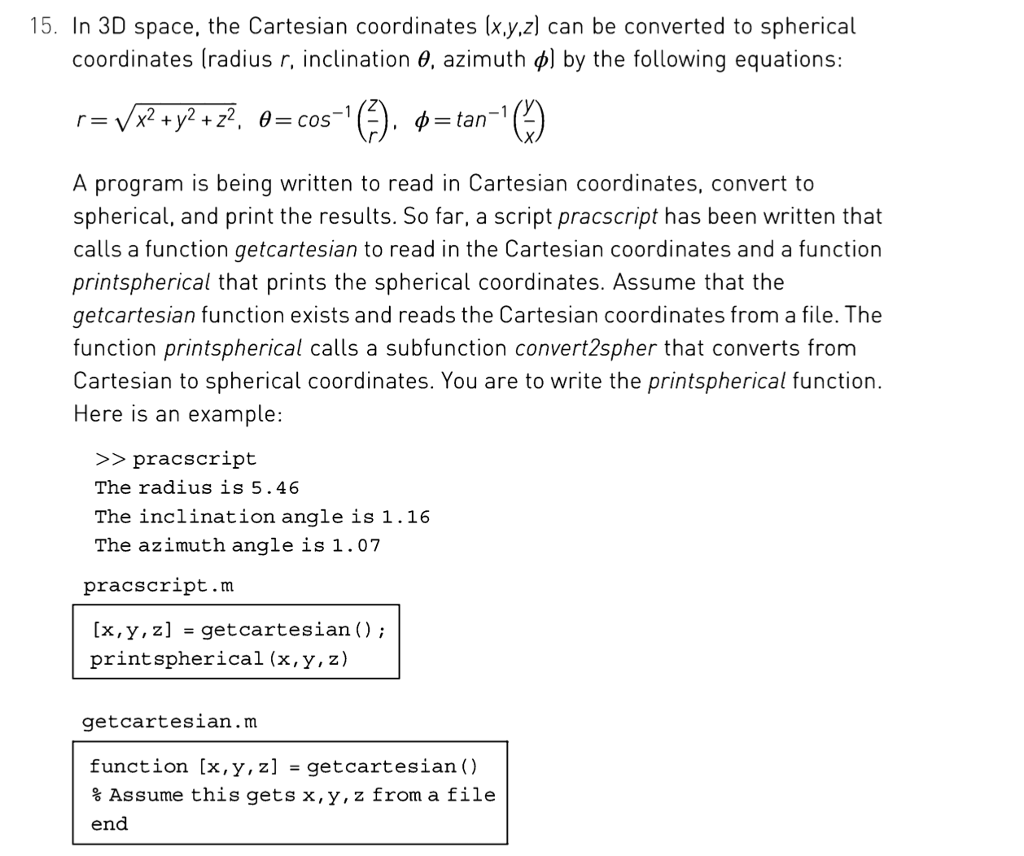Answered step by step
Verified Expert Solution
Question
1 Approved Answer
In 3D space, the Cartesian coordinates (x, y, z) can be converted to spherical coordinates (radius r, inclination theta, azimuth phi] by the following equations:

Step by Step Solution
There are 3 Steps involved in it
Step: 1

Get Instant Access to Expert-Tailored Solutions
See step-by-step solutions with expert insights and AI powered tools for academic success
Step: 2

Step: 3

Ace Your Homework with AI
Get the answers you need in no time with our AI-driven, step-by-step assistance
Get Started


